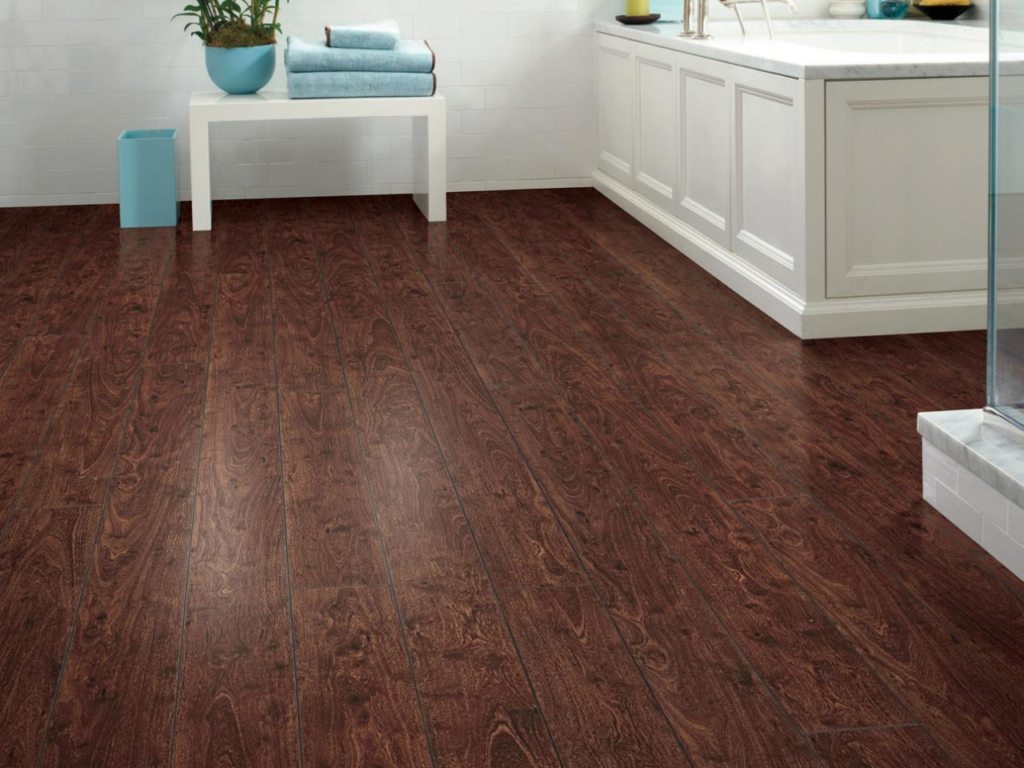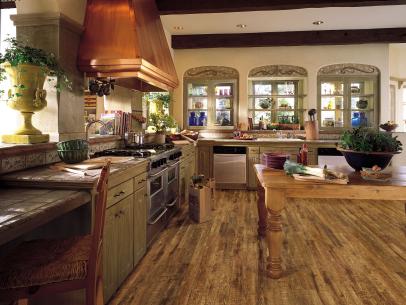
You have to be very selective when it comes to installing bathroom floors, especially since you need to choose the type of floor that’s waterproof, or at least water-resistant. Water-resistant laminate flooring is your best option for bathrooms, which can work as long as you take the appropriate measures to avoid damage. Laminates with a medium-density fiberboard core are generally recommended since they contain water-resistant materials such as wax.
Considerations for Installing Laminate in Your Bathroom floors
Install in Smaller Bathrooms
Laminate flooring is best suited for small bathrooms, such as a downstairs half bath or more intimate master suite bathroom.
Half baths, with only a sink and toilet, lack the tub or shower to create spillage or humidity. And smaller bathrooms connected to master bedroom suites are usually more diligently watched and maintained on a daily basis.
Use Waterproof Silicone Caulk (REQUIRED)
One of the easiest and most important steps you must take to protect your laminate flooring is to use a waterproof silicone caulk upon its initial installation. Unlike your standard grout made of cement and sand, which can absorb water, silicone is flexible and impenetrable.

Minimize Humidity
Even more than kitchens, bathrooms will see high levels of humidity, especially since it has a shower that steams up the entire room. Because laminate flooring is susceptible to moisture and can warp, it’s important to take precautions and reduce it as much as possible.
Remember to run the exhaust fan while taking a shower. And if you can, even open windows to allow the room to breathe.
Benefits of Laminate Flooring in Bathrooms
Laminate floors are easy to install too since they come with a simple click-and-lock system, which is ideal for DIY homeowners. But it’s crucial to install it properly because seams between the boards can also elevate the risk of water damage. Time may come that traditional laminate flooring that’s 100% waterproof will be invented, but at the moment, you have to settle for water-resistant ones.
How to Make Sure Your Laminate Flooring Is Actually Water-Resistant
Water-resistant laminate flooring is made of several layers. You have the wear layer, which is the first defense against daily wear and tear. The thicker the wear layer, the better protection your flooring has. Beneath that is the photographic image or the decorative layer, where you can see the pattern of your flooring.
After that is the water-resistant core, which is where the main durability of your laminate flooring will depend. This should have nothing less than a medium-density fiberboard core with wax. Or other water-repellent materials to guarantee that no water will seep or soak through. The very last layer is the backing and stabilizing, which provides a good foundation for your floor.

Choosing Flooring for Bathrooms
Unlike the other parts of your home where choosing the flooring materials is based mainly on aesthetics. The bathroom requires more careful consideration. Your bathroom flooring should be able to perform well under stress, which mostly involves water. Walls and flooring should be able to withstand moisture. Add the other factors — durability, cost, ease of installation, and of course, appearance — and you have a lot to consider for your bathroom floor.


